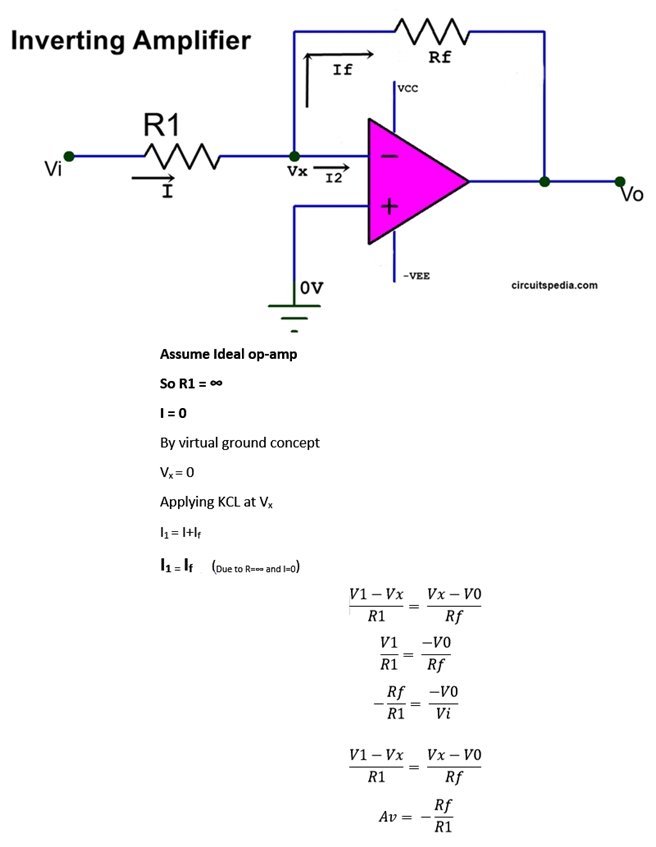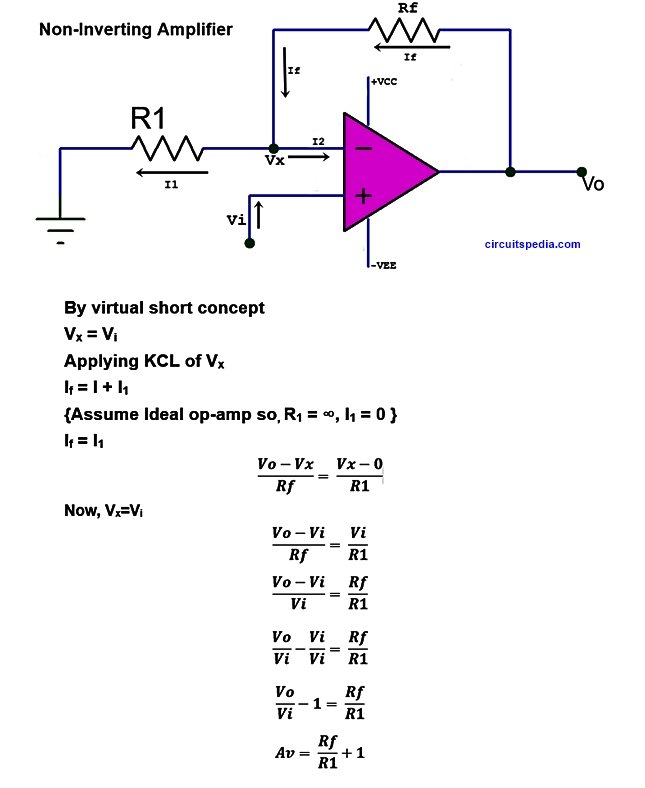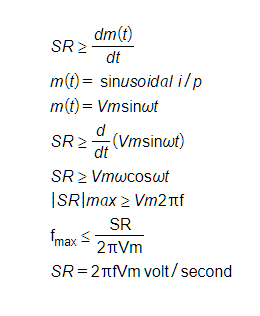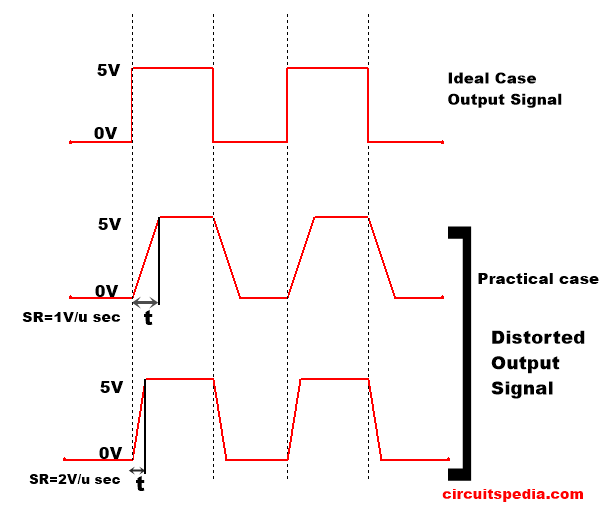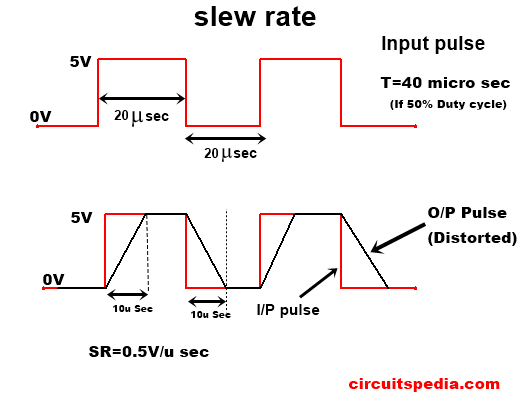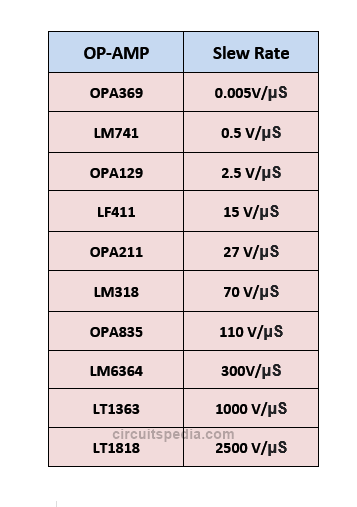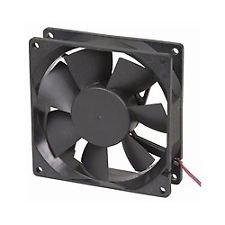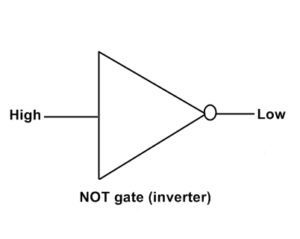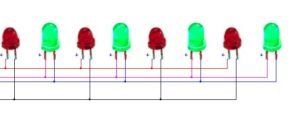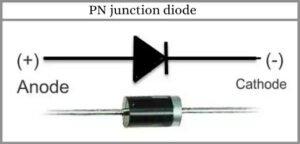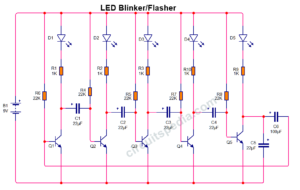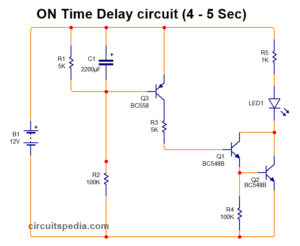Contents
Operational Amplifier
(op-amp)
An operational amplifier or op-amp is basically a multistage, very high gain amplifier having very high input impedance (typically a few Mega ohms) and low output impedance(Less than 100 ohms) and has the capability to amplifying signals of frequency ranging from zero HZ to 1MZ. Opamp is basically a multistage, direct-coupled, negative feedback amplifier that uses voltage shunt feedback to provide a stabilized voltage gain. An operational amplifier contains a number of differential amplifier stages to achieve a very high voltage gain. Op-amps can amplify the DC signals as well as AC signals.
An op-amp uses some external feedback components, such as resistors and capacitors, with the output to input terminals for its operation. And by using these feedback components with different configurations decides the mode of operation of the operational amplifier to in which mode it’s working.
Typical uses of opamps are to provide voltage amplitude changes (Amplitude and polarity), oscillators, filter circuits, and many types of instrumentation circuits. Op-amps are among the most widely used electronic devices today, this is used in consumer, industrial, and scientific devices.
Block diagram of operational amplifier
An opamp is so named as it was originally designed to perform mathematical operations like summation, multiplication, subtraction, differentiation, integration etc. Nowadays opamp is used to perform many varieties of operations such as sign changing, scale changing, scale changing, phase shifting, voltage regulation, In instrumentation, pulse generators, analog to digital and digital to analog converters, the voltage to current converters, current to voltage converters, sample and hold circuit, comparators and in control systems.
Symbol of an op-amp
This is the symbol of an opamp. A is the voltage gain, v1 is the non-inverting input, and v2 is the inverting input.
The differential input is Vin or Vd = V1-V2.
And output voltage Vout = Avin = A(V1-v2). Voltages V1, V2, and Vout are always measured with respect to ground.
An opamp essentially consists of two input terminals and one output terminal. Inputs are marked with the +ve and -ve signs to indicate non-inverting and inverting inputs. The plus (+) sign is called non-inverting input, and the Minus (-) sign is called inverting input. If the input signal is applied at the non-inverting terminal, then the output is amplified with the same polarity, but if the applied input signal is at the Inverting terminal, then the output is amplified but with inverted (Reverse) polarity.
Please keep in mind that the plus and minus signs at the input never mean positive voltage supply and negative voltage supply at the input.
The output voltage is directly proportional to input voltage which is the difference of v1 and v2, Vin=V1-V2
Op-amp circuits
1. Inverting amplifier
In the inverting amplifier, the input voltage is connected with the inverting(-) terminals of the op-amp. And another input terminal is grounded. Always used negative feedback with op-amp. The most widely used constant-gain amplifier circuit is the Inverting amplifier. The output is obtained by multiplying the input by a fixed or constant gain.
Op-amp Gain is denoted by Av.
2. Non-inverting amplifier
When the input voltage is connected at the Non-inverting(+) terminal, then it is called a non-inverting amplifier. In the inverting amplifier, the output is amplified and inverted phase of the input signal. But in a non-inverting amplifier, the output is amplified and also the same as the input phase.
Here the input is applied at non non-inverting (+ve) terminal and the inverting terminal is connected with the ground. Always feedback connected with negative.
Differential Amplifier
The output of the differential amplifier is the difference between two voltages. Differential amplifiers amplify the voltage difference between two input lines, neither of which is grounded.
As shown in fig the Differential amplifier is the combination of an inverting and non-inverting amplifier. When the circuit has two inputs, Vin1 and Vin2, the superposition theorem will be used to determine the gain of the amplifier.
assume Vin1 is 0v, the circuit becomes an inverting amplifier and therefore output voltage due to Vin2 is
Vout2=-Rf/R1Vin2
Now, assuming Vin2 =0, here in this case, the circuit is a non-inverting amplifier having a voltage divider network consisting of resistors R2 and R3 at the non-inverting input. Therefore,
The voltage gain Ad of the differential amplifier is the same as the inverting amplifier.
The differential amplifier can be operated in three different modes.
- Single-Ended mode– When the input signal is applied to only one of two input terminals, either of the two input terminals of the two inputs is 0. So in this mode, the differential amplifier will work as either an inverting amplifier or a non-inverting amplifier, depending on the input signal applied to the inverting or non-inverting terminals.
- Differential mode – In this mode of operation, the magnitude of the two input signals may be the same or different, but their Polarity is opposite at every instant of time.
- Common mode – In this mode, the two input signals are the same in magnitude and also the same in phase at every instant of time. So Input voltage Vin = Vin2 – Vin1 = 0 {because Vin2=Vin1} . So, the output voltage is also zero. Thus, there is no output voltage when a differential amplifier is connected in common mode.
CMRR (Common mode rejection ratio)
The differential amplifier has the features to the ability to reject certain types of noise or undesired voltage signals. These undesired voltage signals or noises are produced by voltage variations in the supply. These undesired signals that appear at both input terminals of the differential amplifier will be equally rejected or canceled out.
CMRR is defined as the ratio of differential voltage gain to common-mode voltage gain and it is given as.
This is a measure of the rejection of signals common to both inputs, and a numerical value is assigned, which is called the common-mode rejection ratio.
Higher CMRR ensures that the common-mode signals, such as noise, are rejected successfully and the output voltage is proportional only to the differential input voltage.
If a differential input change of Y volt produces changes of 1v at the output, and a common mode change of X volts produces a similar change of 1V then the CMRR is X/Y. When the Common-mode rejection ratio is expressed in DB, it is commonly referred to as common-mode rejection (CMR). CMR is a measure of the rejection of signals common to both inputs, and a numerical value assigned, which is called the common-mode rejection ratio (CMRR).
If a differential amplifier is perfect, CMRR would be infinite because in that case common-mode voltage gain Acm would be Zero.
Voltage follower or Unity gain of op-amp
or
Unity gain buffer
This is a special case of the non-inverting amplifier. When the resistor Rf is set as equal to zero, means this is shorted or resistor R1 is opened or open circuit, so resistor R1 becomes ∞. The Output voltage exactly follows the input voltage both in sign and magnitude. So, this circuit is called the voltage follower.
In the voltage follower, the output voltage follows the input voltage
As the virtual short circuit concept. Let us consider both input terminals are shorted internally. so, the potential difference at both inputs is the same. V1 =V2 =Vin
Output voltage = Vout = Vin
Gain with feedback or closed-loop gain of this circuit is 1, so this is also called Unity gain of op-amp
- An operational amplifier is commonly known as an op-amp, is basically a multistage, very gain, direct-coupled, negative feedback amplifier.
- An op-amp has an inverting input(-), a non-inverting input (+). and a single output with the reference of ground (0v).
- The value of output depends on the difference between the two inputs.
- op-amp uses voltage shunt feedback to provide stabilized voltage gain.
- The op-amp is called an ideal op-amp then it has 1. infinite open-loop gain, 2 zero output impedance. 3. Infinite CMRR
- open-loop means that there is no connection between input and output terminals, either directly or via another network.
- There are two basic circuits are known as a non-inverting amplifier and an inverting amplifier.
- The differential amplifier is a combination of inverting and non-inverting amplifiers and amplifies the voltage difference between two input lines, neither of which is grounded. The differential operation involves the use of opposite polarity inputs.
- The common-mode operation involves the use of the same polarity inputs.
Slew rate (SR)
Slew rate definition
slew rate of an op-amp is defined as the maximum rate at which the output voltage can change. In other words, we can say how fast the op-amp is able to respond.
This is a voltage follower. in a voltage follower output signal is the same according to the input signal, but in the practical test, the output signal is not the same as the input. This change of the signal is due to the internal compensation of the capacitor. The output signal occurred a delay of some microseconds as the input signal because of capacitor charge time and discharge time of internal ckt. These results will produce a delay, and the output is not sharp.
SR=|dv/dt|max
Current flow through the capacitor is Ic=Cdv/dt, where dv/dt is the voltage across the capacitor, dv/dt=Ic/C. This is the rate of change of voltage with respect to time.
We take an example of a voltage follower circuit. As per the ideal case response at the output signal of the voltage follower is the same as the input signal, which means the waveform of the input voltage signal and waveform of the output voltage signal are just the same. But in practice, this will not be possible, and we found some delay at the output signal we found.
The time taken to reach from 0V to 5V (here denoted by t) depends on the Slew rate of the opamp. If the slew rate of the op-amp is small, then the time t is very high, and the response rate will be very slow. If the slew rate of the op-amp is very high then the response rate of the opamp is very fast. This time t is taken by the charging and discharging of the capacitor at the intermediate stage.
The unit of slew rate is v/μsec.
If the slew rate (SR)=1v/μsec, then the time taken (t) by the signal from 0v to 5v is 5μs. If SR =5v/μs, then the signal will reach 0v to 5v within only 1μs, and then the response is fast.
By the slew rate, distortion will be produced at the output signal of an op-amp.
Slew rate Formula
To have minimum distortion (in the sinusoidal waveform)
If f>fmax (Distortion)
If f<= fmax (no distortion)
If the slew rate of an op-amp is higher, then the output response is fast and distortion will be less. but if the slew rate is less of an op-amp, the Output response will slow and distortion will be high.
The most commonly used op-amp ICs are LM741, LM358 (dual op-amp), LM324 (quad op-amp) etc.
Operational Amplifier (Op-Amp)
Important Question- Answers
1. What is an Operational Amplifier (Op-Amp)?
An operational amplifier (Op-Amp) is a high-gain electronic voltage amplifier with differential inputs and a single-ended output, widely used in signal processing, filtering, and mathematical operations.
2. What are the basic characteristics of an ideal Op-Amp?
An ideal Op-Amp has:
- Infinite open-loop gain
- Infinite input impedance
- Zero output impedance
- Infinite bandwidth
- Zero offset voltage
- Infinite common-mode rejection ratio (CMRR)
3. What are the different configurations of an Op-Amp?
The most common Op-Amp configurations include:
- Inverting Amplifier
- Non-Inverting Amplifier
- Voltage Follower (Buffer)
- Summing Amplifier
- Differential Amplifier
- Integrator
- Differentiator
4. What is the difference between an Inverting and Non-Inverting Amplifier?
- In an Inverting Amplifier, the input is applied to the inverting (-) terminal, and the output is inverted (180° phase shift).
- In a Non-Inverting Amplifier, the input is applied to the non-inverting (+) terminal, and the output has the same phase as the input.
5. What is the purpose of negative feedback in Op-Amps?
Negative feedback stabilizes the gain, reduces distortion, improves bandwidth, and enhances linearity of the Op-Amp circuit.
6. What is the gain of an Op-Amp in Inverting and Non-Inverting modes?
- Inverting Mode: Av=−Rf/Rin
- Non-Inverting Mode: Av=1+Rf/Rin
where R is the feedback resistor and is the input resistor.
7. What is a Voltage Follower and its application?
A Voltage Follower (Buffer) is an Op-Amp circuit with a gain of 1 (Av=1A_v = 1). It provides impedance matching and isolates different circuit stages without amplifying the signal.
8. What is Common-Mode Rejection Ratio (CMRR)?
CMRR measures an Op-Amp’s ability to reject common-mode signals. It is given by:
CMRR=20log(Ad/Ac)
where Ad is differential gain, and Ac is common-mode gain. Higher CMRR indicates better performance.
9. What is Slew Rate in Op-Amps?
Slew Rate (SR) is the maximum rate at which the output voltage changes per unit time, measured in volts per microsecond (V/µs). A higher slew rate allows the Op-Amp to handle fast-changing signals.
10. What is Input Offset Voltage in an Op-Amp?
Input offset voltage is the small voltage difference required between the input terminals to make the output zero in an open-loop condition.
11. What is an Integrator and Differentiator in Op-Amps?
- Integrator: Produces an output proportional to the integral of the input signal.
- Differentiator: Produces an output proportional to the derivative of the input signal.
These circuits are widely used in signal processing and control systems.
12. What is the difference between Open-Loop and Closed-Loop Operation?
- Open-Loop: The Op-Amp operates without feedback, resulting in extremely high gain but poor stability.
- Closed-Loop: Feedback is applied to control the gain, enhancing stability and performance.
13. What are the power supply requirements for an Op-Amp?
Op-Amps typically require dual power supplies (+V and -V) or a single power supply with proper biasing. Common supply voltages include ±15V, ±12V, and 0-5V.
14. What are some common Op-Amp ICs?
- LM741 – General-purpose Op-Amp
- LM358 – Low-power dual Op-Amp
- TL072 – Low-noise Op-Amp
- OP07 – Precision Op-Amp
15. What are the main applications of Op-Amps?
Op-Amps are used in:
- Signal amplification
- Active filters
- Oscillators
- Analog computing
- Voltage comparators
- Instrumentation circuits
16. How do I choose the right Op-Amp for my application?
Consider factors such as:
- Required gain and bandwidth
- Input and output impedance
- Power consumption
- Slew rate
- Offset voltage and noise performance
17. What is an Instrumentation Amplifier?
An Instrumentation Amplifier is a specialized Op-Amp circuit with high gain, high input impedance, and excellent common-mode rejection, used in precision measurement applications.
18. What causes Op-Amp oscillation, and how can it be prevented?
Oscillations occur due to improper feedback or high-frequency instability. Solutions include:
- Using proper compensation capacitors
- Adding a small resistor in series with the feedback loop
- Ensuring a stable power supply
19. What is a Comparator, and how does it differ from an Amplifier?
A Comparator is an Op-Amp-based circuit that compares two voltages and switches the output accordingly. Unlike amplifiers, comparators operate in an open-loop mode and do not provide linear amplification.
20. What are Rail-to-Rail Op-Amps?
Rail-to-rail Op-Amps can output voltages that span the full power supply range (from ground to Vcc), making them ideal for low-voltage applications.
Also read
-
Thevenin theorem
-
Norton theorem
-
kirchhoff’s law
-
LOGIC GATES
-
How capacitor block dc current
-
What is Impedance (Impedance vs Resistance)
-
Homemade Mini FM Radio Station Transmitter Circuit



